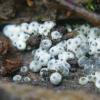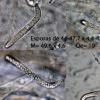
21-08-2015 08:22
PequeûÝas bolas, ô redondas y peludas, ô en tocon

21-08-2015 08:19
a ver que os pareceEsporas de 14,2-15 x 4,4-4,6M=

20-08-2015 01:29
This Scutellinia seems to fit well with S superba

14-08-2015 00:00
Lepista ZacariasDear all,I would like to classify the ascomycete g

19-08-2015 22:09
Bonsoir, Je recherche la description de ce champi

20-08-2015 12:05
 Blasco Rafael
Blasco Rafael
Hola, tengo esta muestra recogida a 2150m, pradera

19-08-2015 12:13
brigitte capoenBonjour , Je suis û la recherche des deux publica

10-08-2015 12:15
Steve ClementsBonjour,On a trouvûˋ cet Asco avec des spores brun

16-08-2015 15:44
 Bernard CLESSE
Bernard CLESSE
Bonjour û tous,Voici un Scutellinia rûˋcoltûˋ sur
Redondas y peludas
Castillo Joseba,
21-08-2015 08:22
Joseba
Miguel ûngel Ribes,
21-08-2015 08:26

Re : Redondas y peludas
Castillo Joseba,
21-08-2015 15:19
Re : Redondas y peludas
Gracias chaval




